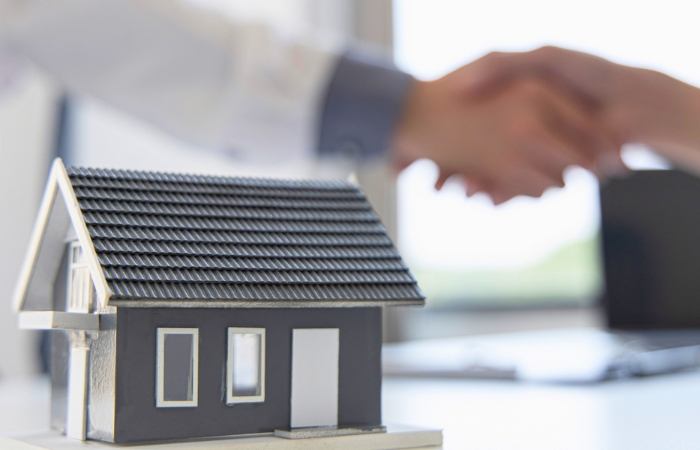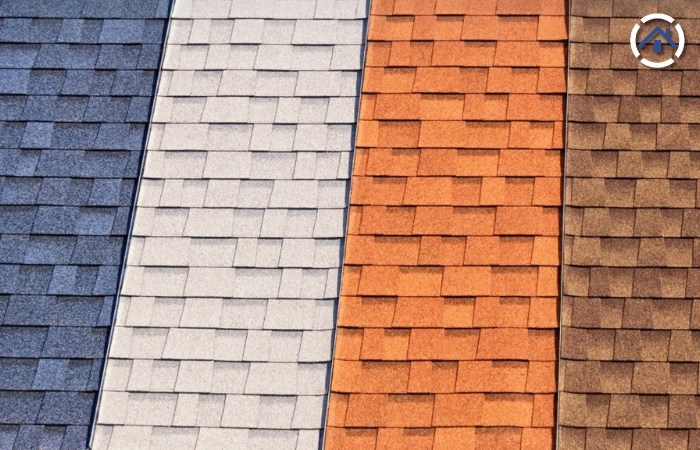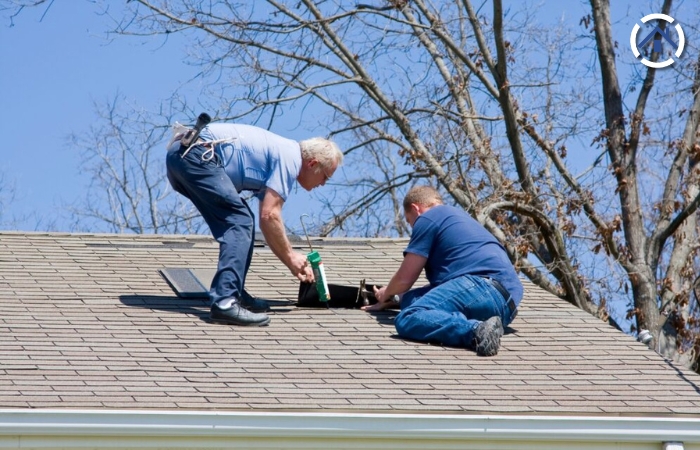
Did you know that 40% of homeowners' insurance claims are related to hail or wind damage? This statistic highlights just how crucial the condition of your roof is when it comes to protecting your home and managing your insurance costs.
Insurance companies closely assess the condition of your roof when determining your home insurance policy because a well-maintained roof can mitigate potential damage and reduce the likelihood of claims.
This blog will educate homeowners on the critical connection between roofing and home insurance. Understanding how the state of your roof affects your insurance premiums, coverage, and claim process can empower you to make informed decisions about roof maintenance and upgrades, ultimately safeguarding your home and finances.

Your home insurance policy is designed to protect your property from various risks, including damage to the structure itself. Since the roof is one of the most vulnerable parts of your home, its condition is closely scrutinized by insurance companies. Here's how the connection between roofing and home insurance works:
1. Coverage: The condition of your roof directly affects the coverage provided by your insurance policy. Well-maintained roofs are less likely to suffer from leaks or other damage so insurance companies may offer more comprehensive coverage for homes with newer or well-maintained roofs. Conversely, older or poorly maintained roofs may be subject to coverage limitations or exclusions.
2. Premiums: Insurance premiums are determined based on the level of risk associated with insuring your home. Homes with sturdy, durable roofs are considered lower risk and may qualify for lower premiums. On the other hand, homes with older or less resilient roofs may face higher premiums to offset the increased risk of damage.
3. Claims Processes: If your roof is damaged, the claims process can be smoother if it is in good condition and meets specific standards. Insurance companies is more likely to approve claims and provide adequate compensation for repairs or replacement if your roof is well-maintained and meets modern building codes.
Impact resistance is crucial when selecting roofing materials, particularly in regions prone to hailstorms or other severe weather events. Asphalt shingles are classified into four impact resistance classes (Class 1 through Class 4), with Class 4 providing the highest resistance level. These classifications help homeowners choose shingles that can withstand impacts and minimize damage, potentially affecting home insurance premiums and coverage.
1. Class 1 shingles offer the lowest level of impact resistance, capable of withstanding the impact of a steel ball dropped from a height of 12 inches. These shingles are less durable compared to higher classes and are more susceptible to damage from hail and other impacts. As a result, homes with Class 1 shingles may have higher insurance premiums due to the increased risk of damage.
2. Class 2 shingles provide moderate impact resistance, withstanding the impact of a steel ball dropped from 24 inches. They are more durable than Class 1 shingles but are still not ideal for areas with frequent hailstorms. While they offer improved protection, Class 2 shingles might not significantly lower insurance premiums.
3. Class 3 shingles are a type of asphalt roof shingle designed to withstand moderate hail damage and wind speeds up to 60 mph. They offer high impact resistance, capable of withstanding the impact of a steel ball dropped from 36 inches. These shingles are suitable for areas with occasional severe weather, offering a good balance between cost and protection.
Homes with Class 3 shingles may qualify for reduced insurance premiums due to their higher durability and resistance to impact.
4. Class 4 shingles are the highest-rated, designed to withstand hail up to 2 inches in diameter. They provide the highest level of impact resistance, withstanding the impact of a steel ball dropped from 48 inches. These shingles are designed for maximum durability and can handle severe weather conditions, including large hail.
Homes with Class 4 shingles often benefit from the lowest insurance premiums due to their superior protection against damage.

Regular roof inspections are crucial for maintaining the integrity of your roof and ensuring it meets insurance requirements. Insurance companies often recommend or even require periodic inspections to identify and address minor issues before they become major problems. Scheduling professional inspections at least once a year and after significant weather events can help ensure the longevity and safety of your roof.
1. Detecting the Early Signs of Damage or Wear and Tear: Regular inspections can catch small problems like loose shingles, minor leaks, or damaged flashing before they escalate into major issues. Early detection can prevent extensive damage requiring costly repairs or a full roof replacement.
2. Preventing Small Problems from Escalating into Costly Repairs: By addressing minor issues promptly, you can avoid the higher costs associated with major repairs. For example, fixing a small leak can prevent water damage to your attic, insulation, and walls, which can be expensive.
3. Providing Documentation Useful for Filing Insurance Claims: Keeping a record of regular roof inspections and maintenance is essential for filing an insurance claim. Detailed documentation, including inspection reports and photographs, can support your claim and expedite approval. Insurance adjusters are more likely to approve claims with evidence of ongoing maintenance and care.
Maintaining your roof can significantly impact your home insurance costs. Here are some maintenance tips to help keep your roof in top condition and potentially lower your premiums:
1. Clean Your Gutters Regularly. Keep your gutters free of debris to prevent water damage. Clogged gutters can cause water to back up under the roof, leading to leaks and damage. Regularly cleaning gutters can prevent these issues and protect your roof and home from water-related damage.
2. Make Sure to Trim Overhanging Branches. Trim or remove branches that could fall and damage the roof during a storm. Overhanging branches can also drop leaves and debris onto the roof, leading to deterioration in moss growth and roofing material. Trimming branches reduces these risks and helps maintain the roof's condition.
3. Inspect Your Roof for Damage. Inspect your roof for missing or damaged shingles and have them repaired promptly. Regular inspections can help you spot problems like cracked or curling shingles, which can be replaced before they cause leaks. Prompt repairs ensure the roof remains watertight and structurally sound.
4. Check the Flashings. Ensure that the flashing around chimneys, vents, and other protrusions is secure and in good condition. Flashing is important for preventing water infiltration at roof joints and edges. Inspecting and maintaining flashing helps prevent leaks and water damage, preserving the roof's integrity.
5. Schedule Professional Roof Inspections. In addition to your inspections, hire a professional roofer to conduct thorough inspections. Professionals can help you identify issues that might be missed during a DIY inspection and provide expert recommendations for maintenance and repairs.
6. Always Address Weather Damage Immediately. Inspect your roof for damage after severe weather events like storms, hail, or heavy winds. Promptly addressing weather-related damage can prevent further deterioration and costly repairs. Document any damage and repairs for insurance purposes.

The state of your roof plays a pivotal role in your home insurance coverage, premiums, and claim processes. With 40% of homeowners' insurance claims stemming from hail or wind damage, maintaining a robust roof is essential for safeguarding your home and finances. Understanding the intricate connection between roofing and home insurance empowers homeowners to make informed decisions regarding maintenance and upgrades, ultimately reducing the risk of damage and ensuring adequate insurance protection.
Given the significant impact of roofing on home insurance, it's crucial to consult with roofing experts to assess the condition of your roof and ensure it meets insurance requirements. Whether scheduling regular inspections, upgrading to impact-resistant shingles, or promptly